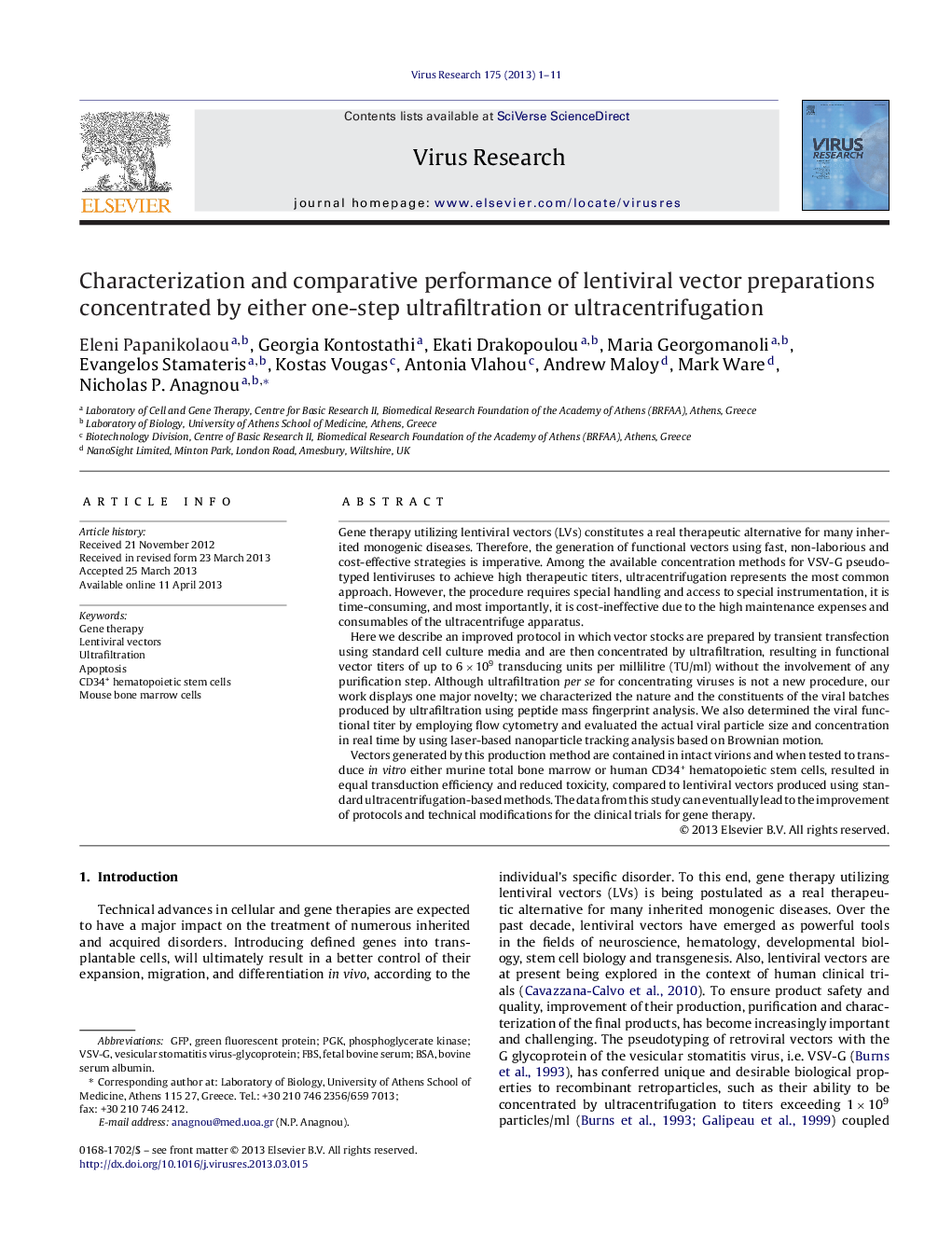| Article ID | Journal | Published Year | Pages | File Type |
|---|---|---|---|---|
| 3428615 | Virus Research | 2013 | 11 Pages |
•A novel concentration protocol based on ultrafiltration without involving further purification steps is described.•This protocol results in high vector titers of 7 × 108 TU/ml in average suggesting the clinical feasibility of the approach.•Vector's formulations are characterized by SDS-PAGE and peptide mass fingerprint analysis and contain albumins.•The actual particle number and the formation of aggregates are evaluated by laser-based nanoparticle tracking analysis.•Toxicity, functionality, transduction efficiency and scaling up of the procedure for clinical use are also discussed.
Gene therapy utilizing lentiviral vectors (LVs) constitutes a real therapeutic alternative for many inherited monogenic diseases. Therefore, the generation of functional vectors using fast, non-laborious and cost-effective strategies is imperative. Among the available concentration methods for VSV-G pseudotyped lentiviruses to achieve high therapeutic titers, ultracentrifugation represents the most common approach. However, the procedure requires special handling and access to special instrumentation, it is time-consuming, and most importantly, it is cost-ineffective due to the high maintenance expenses and consumables of the ultracentrifuge apparatus.Here we describe an improved protocol in which vector stocks are prepared by transient transfection using standard cell culture media and are then concentrated by ultrafiltration, resulting in functional vector titers of up to 6 × 109 transducing units per millilitre (TU/ml) without the involvement of any purification step. Although ultrafiltration per se for concentrating viruses is not a new procedure, our work displays one major novelty; we characterized the nature and the constituents of the viral batches produced by ultrafiltration using peptide mass fingerprint analysis. We also determined the viral functional titer by employing flow cytometry and evaluated the actual viral particle size and concentration in real time by using laser-based nanoparticle tracking analysis based on Brownian motion.Vectors generated by this production method are contained in intact virions and when tested to transduce in vitro either murine total bone marrow or human CD34+ hematopoietic stem cells, resulted in equal transduction efficiency and reduced toxicity, compared to lentiviral vectors produced using standard ultracentrifugation-based methods. The data from this study can eventually lead to the improvement of protocols and technical modifications for the clinical trials for gene therapy.
